Dead To Me - [6]
‘They covered her up,’ Gill said. Wondering about that, whether it was a question of a perverted sense of respect or plain fear. It’s an instinctive response to hide a body, hide and run. There hadn’t been a duvet on the bed. Did the killer stop to fetch it? Wasting precious moments? No cover on the duvet. Gill could see patches of blood where it had soaked into the fabric along the top edge; there were older stains too, and the polycotton material was bobbled with use. Didn’t look as though the thing had ever been washed. She could see the pieces of foil under the coffee table, the small plastic tube, the lighter. Knew laundry wasn’t high on the priority list for a druggie.
When Ranjeet arrived he began by making an assessment of the scene as he found it. And agreed with Phil Sweet and Gill that the duvet should be tape-lifted for any potential forensic evidence before it was removed. Once that had been done and everybody was satisfied that they had thoroughly documented the scene as it was found, it was time to lift the bedding. A CSI took each end, aiming to remove the article as carefully as possible and cause minimum disruption. A CSI provided a large evidence sack for the duvet, sealed it and allocated a reference number.
Gill got her first good look at their victim. She wore an open, kimono-type housecoat, which was rucked up beneath her. A bloody incision marked her left breast close to her sternum and ribbons of blood had flowed from there down her side on to the floor. Blood on her right hand too, which lay on her belly. Nails bitten down. The housecoat was a floral design: white background with blowsy vivid pink-and-green flowers on. No knickers. She didn’t have much pubic hair. Not shaved, Gill thought, just immature – a teenager. Her hair was two-tone, partly covering the left side of her face, a bad bleach job growing out. Her mouth and nose were peppered with pimples. A row of silver-coloured earrings edged each of her ears; they made Gill think of the clasps they put on paint tins to keep the lids on. Her left arm was twisted at a peculiar angle, the hand forced under the forearm and pressed up against the strut at the base of the coffee table. Gill thought she’d probably hit the table as she’d fallen.
Ranjeet made notes in his smart phone and the CSIs got busy with the cameras.
‘Penetrating wound between the ribs,’ Ranjeet said, ‘massive blood loss. I suggest we tape-lift the body and swab in situ, then undress the body; rest post-mortem. We can move the table now.’
Gill stepped away, went to the window, looking out at the back, a tiny yard walled by broad, horizontal planks for fencing. Perfect climbing territory for a house burglar, but this girl had nothing worth taking. Unless somebody came to steal drugs. The telly in the corner by the window wasn’t a flat screen but an old monster, impossible to move without transport.
As they moved the table, the victim’s left arm slumped, gravity pulling it down, unfolding. ‘No sign of rigor,’ Gill said. If the body was still pliable and there were no obvious signs of decomposition, it meant the time of death was recent. Rigor came on a few hours after death and lasted for between one and three days, depending on the external conditions.
Ranjeet continued his examination. ‘Wound to the left arm,’ he pointed out, ‘probably defensive.’
Gill squatted down, careful not to get her feet in the puddle of blood congealing around the girl’s torso. The cut was a couple of inches below her wrist, along the edge of the bone. ‘The weapon?’ Gill asked.
‘No sign,’ said one of the CSI guys. Gill looked at the cut and at the tattoo that braceleted the girl’s wrist in gothic script. ‘Who’s Sean?’ she said.
‘Boyfriend,’ Phil supplied.
Ranjeet took the body temperature. He nodded at the result. ‘Thirty-five point nine, still warm.’ A CSI began the process of placing and removing tape on the girl’s body and then taking swabs from the mouth, nose and vagina.
Gill and Phil discussed what further actions should be taken to retrieve crime-scene evidence, among them recovering the remaining bed linen from the bedroom.
‘Undress her now.’ A large plastic sheet was placed to the side of the dead girl and then the body was lifted as carefully as possible and laid on it. The CSIs removed the housecoat, the back of it drenched in blood, and put it in an evidence bag.
‘We’ll be ready to lift her soon,’ Ranjeet said. The stretcher and the body bag were prepared. Any further examination of the body would be done at the mortuary as part of the post-mortem; they wouldn’t turn her over here and risk destroying evidence.
So, Lisa Finn, thought Gill as she prepared to leave, what the hell happened to you?
4
THERE WAS ALWAYS that buzz when they picked up a job. A spurt of something in the gut, a kick-start to the heart. ‘You’re a ghoul, Janet,’ Ade had said to her one time.
‘I’m a detective,’ Janet said, ‘this is what I do, this is what I’m good at. We find the bastards, we get them sent down.’
The DCI had asked Janet to do the death message and to take Rachel with her. The worst thing about delivering the bad news was the sheer unpredictability of the reaction you got. One woman laughed, another threw up. Some people simply refused to believe you, arguing the toss, insisting that so-and-so was fine, they had seen them last night, they’d spoken to them on the phone. You had to sit them down and spell it out in big fat letters: D.E.A.D. Repeat it until they stopped blethering on:
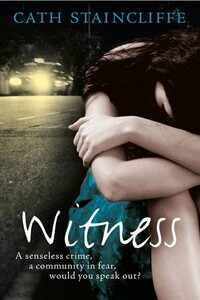
"A painfully honest exploration of an ordinary family under stress… A stunning piece of work." – Ann CleevesFour bystanders in the wrong place at the wrong time. Witnesses to the shocking shooting of a teenage boy. A moment that changes their lives forever. Fiona, a midwife, is plagued by panic attacks and unable to work. Has she the strength to testify? Mike, a delivery driver and family man, faces an impossible decision when his frightened wife forces him to choose – us or the court case. Cheryl, a single-mother, doesn't want her child to grow up in the same climate of fear.

Blue Murder: Make BelieveThe third Blue Murder novel written by the creator of the hit ITV police drama starring Caroline Quentin as DCI Janine Lewis.For nine days the people of Manchester have been looking for missing three-year-old Sammy Wray then DCI Janine Lewis is called to a residential street where a child's body has been found. It's a harrowing investigation and Janine's personal problems make leading the inquiry even tougher. Is this the case that will break her?Praise for the Blue Murder books'Complex and satisfying in its handling of Lewis's agonised attempts to be both a good cop and a good mother.'The Sunday Times'Uncluttered and finely detailed prose.'Birmingham Post'Beautifully realised little snapshots of the different characters' lives… Compelling stuff.'Sherlock Magazine'A swift, satisfying read.'City Life'Precise and detailed delineation of contemporary family relationships.'Tangled Web'Lewis seems set to become another very popular string to Staincliffe's bow as one of the leading English murder writers.'Manchester Metro'Pace and plenty of human interest.'Publishing News'Blending the warmth of family life with the demands of a police investigation.'Manchester Evening News'Juggling work and family is a challenge of modern life and encountering realistically portrayed women with family responsibilities is a pleasure.

Your husband, your family, your freedom. What would you sacrifice for love? A love story, a modern nightmare and an honest and incisive portrayal of a woman who honours her husband's wish to die and finds herself in the dock for murder.When Deborah reluctantly helps her beloved husband Neil end his life and conceals the truth, she is charged with murder. As the trial unfolds and her daughter Sophie testifies against her, Deborah, still reeling with grief, fights to defend her actions. Twelve jurors hold her fate in their hands, if found guilty she will serve a life sentence.
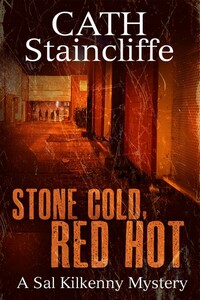
When private eye Sal Kilkenny is asked to discover the whereabouts of Jennifer Pickering, disinherited by her family twenty years ago, it seems that Jennifer does not want to be found. Despite her initial reservations, as the events of the past gradually unfold, single-mum Sal finds that she is becoming engrossed in the case. There are dark secrets waiting to be uncovered but can Sal break the conspiracy of silence that surrounds this mystery? As she spends her days tracing Jennifer, Sal's nights become shattered by an emotional and often dangerous assignment with the Neighbour Nuisance Unit on one of Manchester's toughest housing estates.
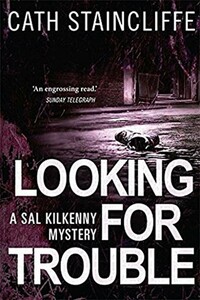
She's a single parent. A private eye. And liking it. Until, that is, Mrs Hobbs turns up asking Sal Kilkenny to find her missing son. Sal's search takes her through the Manchester underworld, a world of deprivation and petty theft, of well-heeled organised crime and ultimately, murder. Would she have taken the job on if she had known what she was getting into? Probably, because Sal is fired with the desire to see justice done, to avenge the death of a young lad whose only crime was knowing too much.The first Sal Kilkenny Mystery, short-listed for the Crime Writers' Association best first novel award and serialised on BBC Radio 4, Woman's Hour.
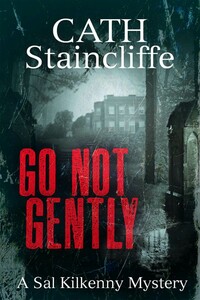
From the author of LOOKING FOR TROUBLE, a further crime novel featuring private investigator Sal Kilkenny. When a man is distraught at his wife's apparent infidelity, he enlists the help of Sal to confirm his suspicions, only to find himself a widower soon afterwards. From there Sal's other case also begins to take a disturbing and violent turn.

A handsome young New York professor comes to Phoenix to research his new book. But when he's brutally murdered, police connect him to one of the world's most deadly drug cartels. This shouldn't be a case for historian-turned-deputy David Mapstone – except the victim has been dating David's sister-in-law Robin and now she's a target, too. David's wife Lindsey is in Washington with an elite anti-cyber terror unit and she makes one demand of him: protect Robin.This won't be an easy job with the city police suspicious of Robin and trying to pressure her.

Частный детектив Андрей Шальнев оказывается вовлеченным в сложную интригу: ему нужно выполнить заказ криминального авторитета Искандера - найти Зубра, лидера конкурирующей группировки. Выполняя его поручение, Андрей неожиданно встречает свою старую знакомую - капитана ФСБ Кристину Гирю, участвующую под прикрытием в спецоперации по ликвидации обеих банд.

From the creator of the groundbreaking crime-fiction magazine THUGLIT comes…DIRTY WORDS.The first collection from award-winning short story writer, Todd Robinson.Featuring:SO LONG JOHNNIE SCUMBAG – selected for The Year's Best Writing 2003 by Writer's Digest.The Derringer Award nominated short, ROSES AT HIS FEET.THE LONG COUNT – selected as a Notable Story of the Year in Best American Mystery Stories 2005.PLUS eight more tales of in-your-face crime fiction.

В основу этой повести положены действительные события. 14 июля 1969 года из историко-художественного музея города Сольвычегодска была похищена пелена «Богоматерь Владимирская», изготовленная в мастерских Строгановых в первой половине XVII века. Долгое время о ней ничего не было известно, пока автор случайно не обнаружил ее в Коряжме в одной частной коллекции.Конечно, последовавшие за этим события несколько изменены, как заменены и имена действующих лиц.
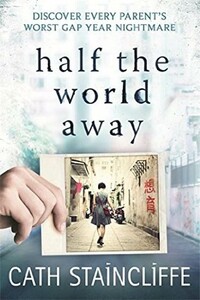
Lori Maddox chooses to spend the year after university travelling and visits China where she finds casual work as a private English tutor. Back in Manchester, her parents Joanna and Tom, who separated when Lori was a toddler, follow her adventures on her blog. When Joanna and Tom hear nothing for weeks they become increasingly concerned, travelling out to Chengdu in search of their daughter. Landing in a totally unfamiliar country, Joanna and Tom are forced to turn detective, following in their daughter's footsteps.

Эта книга от начала до конца придумана автором. Конечно, в ней использованы некоторые подлинные материалы как из собственной практики автора, бывшего российского следователя и адвоката, так и из практики других российских юристов. Однако события, место действия и персонажи, безусловно, вымышлены. Совпадения имен и названий с именами и названиями реально существующих лиц и мест могут быть только случайными.В центре Москвы происходят убийства известных ювелиров. Но близкие уверяют, что из квартир ничего не пропало.